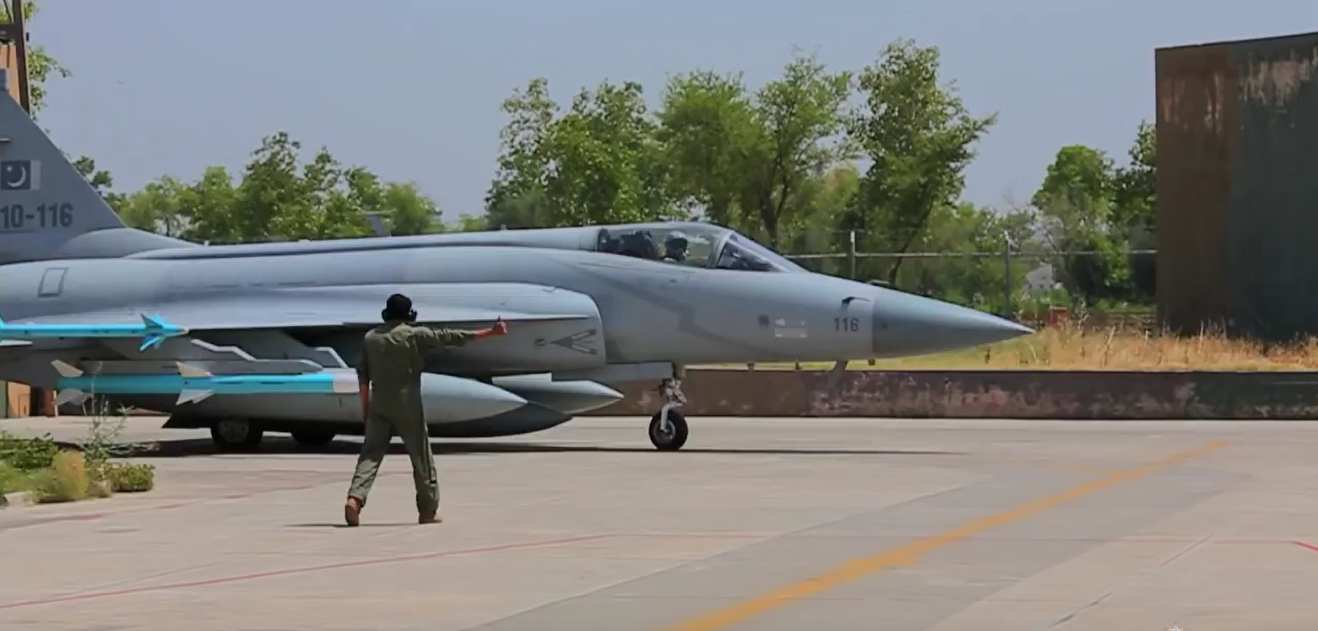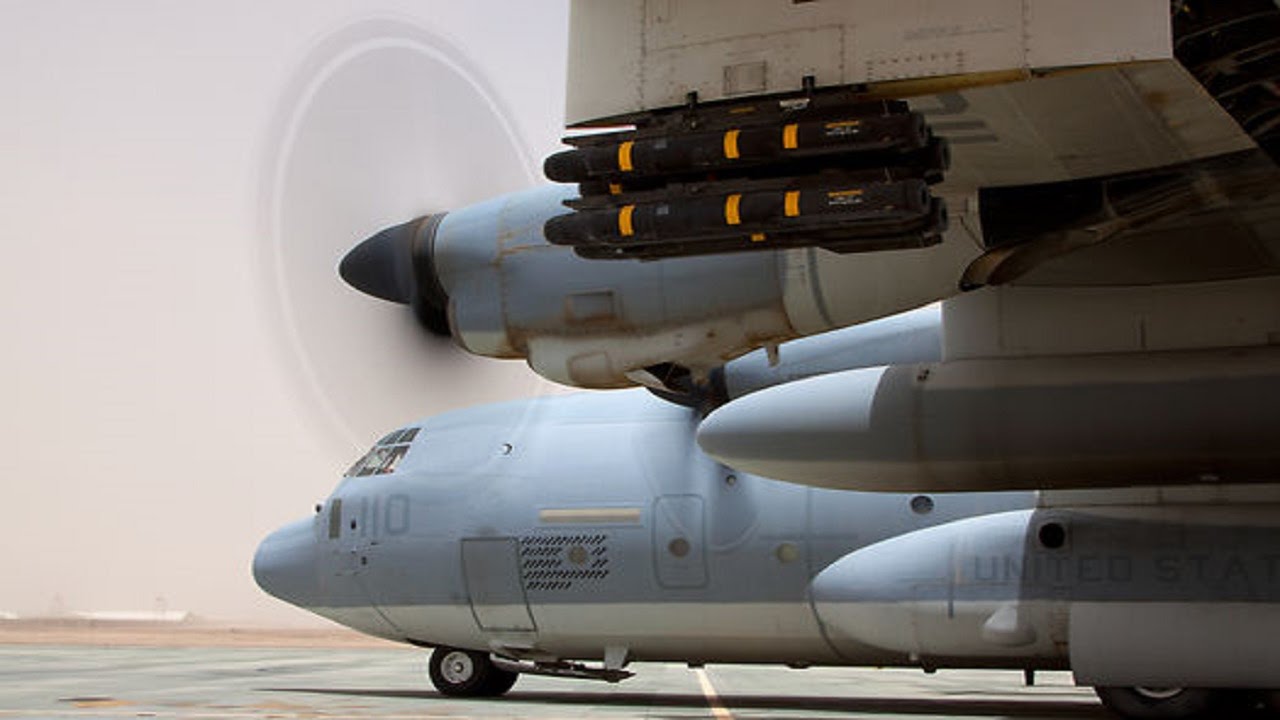2639Views 15Comments

Could the JF-17 Thunder help South Africa? (Part 2)
03 February 2016
By Bilal Khan
Monday’s article introduced the idea of Denel Dynamics partnering with the Pakistan Aeronautical Complex (PAC) to offer a combined fighter and munitions package using their respective products. In summary, the JF-17 can serve as a native platform of sorts for Denel Dynamics to use as a means to market its munitions, specifically in the context of becoming a preferred vendor for countries unable to acquire sufficient numbers of Western or Russian fighters, or at all. For insight as to how the JF-17 could directly benefit the South African defence industry more broadly, be sure to review part-one.
For Denel Dynamics and PAC, the best time to make a splash would be with the formal unveiling of the JF-17 Block-III, which is currently under-development. The PAF plans to equip the JF-17 Block-III with an active electronically scanned array (AESA) radar, helmet mounted display and sight (HMD/S – for which South Africa could offer technical assistance), and potentially even an infrared search and track (IRST) system. While the jump from legacy platforms to the JF-17 Block-II is already significant, the JF-17 Block-III pushes the leap to a much higher league by embracing the cutting-edge technology (e.g. AESA radar) found on the industry’s flagship competitors, such as the Saab JAS-39E/F Gripen.
In fact, the JF-17 Block-III’s entry would be markedly strong if presented with Denel Dynamics’ range of new munitions, which in turn could be marketed as being comparable in form and function to the systems supplied by Western vendors. For PAC, the benefits are obvious. With Denel’s support it could guarantee the availability of advanced munitions to prospective customers, and in turn, package the JF-17 as a complete ready-to-go solution.
The prospect of presenting the world a fifth-generation high-off-boresight (HOBS) within visual range air-to-air missile (WVRAAM), a set of modular precision-guided bombs (PGB), and potentially even an anti-ship capable air-launched cruise missile (ALCM) as well as next-generation beyond visual range air-to-air missile (BVRAAM) with a readily available AESA radar-equipped fighter without many “ifs and buts” cannot be understated. Factor in the presence of Paramount Group and its capacity to train and potentially assist in the induction process (at least in Africa), then the JF-17 can emerge as a very compelling end-to-end solution.
There are scarcely few – if any – competing vendors who could offer such a package as affordably and readily as Denel Dynamics and PAC. Before continuing further with the market potential, it would be a good idea to look at how each of the aforementioned munitions can benefit the JF-17.
The A-Darter HOBS WVRAAM and Marlin BVRAAM would imbue the JF-17 with a competitive air-to-air profile. As discussed in Monday’s piece, the A-Darter is a fifth-generation system similar to the AIM-9X, which is an industry flagship available to relatively few air arms, especially in the developing world. The A-Darter’s thrust-vectoring nozzle, highly accurate imaging infrared (IIR) seeker, and electronic counter-countermeasures (ECCM) capability makes the A-Darter a system designed to be used in modern electronic threat environments. When coupled with an HMD/S system, the A-Darter would position the JF-17 as a very credible dogfighter, even against more capable platforms.
The Marlin active radar-guided BVRAAM is being developed as a technology demonstrator which will incorporate improved electronic counter-countermeasures (ECCM) to handle up and coming radar-frequency ECM techniques (such as DRFM-based decoys). With an expected range of 100km, the final product will be a major gain for the JF-17 in terms of its extended-range air-to-air capability, which in Block-III would accompany an AESA radar (which will hopefully include substantial improvement in range and engagement capabilities). The Marlin platform is also envisaged to be a surface-to-air missile (SAM) system for use on land and sea. In other words, this missile’s inclusion with JF-17 could open those JF-17 users as prospective SAM buyers as well.
The Raptor and Umbani (also known as al-Tariq in UAE service) are modular precision-guided bombs (PGB). Collectively, these munitions would imbue the JF-17 with versatile strike capabilities. The Raptor is a glide-bomb design meant to carry a heavyweight explosive at stand-off ranges. The Umbani is a kit for transforming general purpose bombs (GPB) such as the Mk-8x series into precision-guided bombs (similar to the U.S Joint Direct Attack Munition). In addition to having multiple guidance options, the Umbani could also extend bomb ranges to over 100km. With the capacity to have these bombs equipped for stationary (INS/GPS) and moving targets (laser and IIR), the Raptor and Umbani are versatile strike options. In turn, the JF-17 would present itself as a fully adept platform, i.e. capable of fulfilling the same level of air-to-surface air support and strike engagement offered by more expensive platforms.
The Mokopa has the potential to be Denel’s equivalent to the much-appraised MBDA Brimstone. Even in its current form the Mokopa would make for a good tactical munition, but with a millimeter wave seeker and range-extension, the Mokopa could be a highly precise fire-and-forget air-to-ground missile, especially against moving vehicles. For prospective buyers interested in better time-sensitive targeting and low-yield precision-strike capabilities, the JF-17 and improved Mokopa could make for an attractive package.
While not on Denel’s roadmap at this time, an air-launched cruise missile that could double as an anti-ship missile (AShM) would offer air forces long-range strike capabilities. In turn, this would present the JF-17 as more than simply a tactical fighter. A developing country has very limited resources, hence the idea that a relatively affordable fighter offering limited or quasi-deterrence value (in conventional terms) makes for a value-added proposition. The added anti-ship aspect (which is an industry-wide trend) would position the ALCM and JF-17 as a versatile package. Moreover, Denel and PAC can market the ALCM as their equivalent to the KEPD 350 and MBDA SCALP.
Collectively, these munitions will give the JF-17 a strong chance of entering high-value markets such as Egypt and Morocco, and potentially those which had closed their doors, such as Argentina. It could also raise interest in markets that were not on PAC’s radar in the first place. To readily secure a sale with certain customers, Pakistan and South Africa could come to an agreement where the munitions are sold to a customer directly by Pakistan (under a paid license to South Africa). This is similar to the idea of having Paramount Group serve as a reseller of the JF-17 in certain markets; Pakistan could be a single-source vendor for a specific set of markets.
Due to budgetary constraints, Denel Dynamics will require Pakistan’s financial support in developing some of the aforementioned weapons, such as the Marlin BVRAAM. Although risky, this would be a worthwhile opportunity for the PAF to acquire incredibly strong insight into the development of munition technology, and perhaps even tailor systems currently under development (such as the Marlin) to meet its own specific needs. Besides strengthening PAC’s position in the market, the PAF’s investments in the above programs could also meet the PAF’s long-term requirements. The technology and competency injection would also enable the PAF to have access to advanced locally sourced munitions, thus giving Pakistan further control over its defence supply chain, and thus, more autonomy.
For these reasons the PAF needs to value the development of munitions as seriously as it does the JF-17. Of course, this should occur in conjunction with further localization of the JF-17, such as gradually producing the entirety of the airframe, directly establishing and maintaining strong ties with external vendors (for engines, radars and avionics), and showing enthusiasm for further indigenization where possible. Not only would work in each of these areas strengthen the PAF’s strategic position militarily, but it would enable it to command considerable respect from the commercial market.
This is not to say that China is an unreliable vendor, but Pakistan must carve out for itself autonomy and self-dependence, and in pursuit of that, it needs to branch out and establish ties with players that could (at least in some respects) be its peers, such as South Africa, Brazil and Ukraine. In regards to South Africa specifically, Pakistan has an opportunity to form deep-rooted defence ties, i.e. engage in cooperation that could be spread across many areas, especially commercial, education, industry, and research and development.
The idea that defending one’s borders with contemporary weapon systems that do not have to cost an inordinate amount of money and political integrity is a key message Pakistan is conveying with the JF-17. The JF-17 Block-III, with its AESA radar and HMD/S, would be a decisive step forward in this regard; but to present the JF-17 Block-III with the latest in munitions technology, such as the A-Darter, Raptor-II/III, Umbani and hopefully the Marlin and others, would be a true leap. Together, Denel Dynamics, PAC, and other possible partners (such as those involved in supplying radars and avionics for the JF-17) could show the practical manifestations of this idea, and in turn, generate market-share for their respective offerings.



15 Comments
by srmklive
Really intriguing insight Bilal. I really hope that PAF looks into this. If so, this will really open new markets to JF-17. One question i have for you do you think that PAF might consider developing a flanker version of JF-17?
by SP
Chinese technology is making major leaps and is also maturing. Therefore would it not make more sense to work with Chinese companies as they will have all the solutions that Pakistan could need. These solutions may also help with Pakistans new high tech combat aircraft.
by jigsaww
Hi,
Just a reflection on the article itself. Hope you don’t mind my saying…
I didn’t understand the purpose of part 2?
You discussed the same missile and concepts in both…
by jigsaww
Can you do some pieces on pakistan’s space program as to where it stands and what is required with changing scenario with military focus. like navy, this area needs be explored/discussed more too.
by saqrkh
Must be my cold… I was trying to explain how Denel Dynamics’ stuff would benefit the JF-17 in both market and actual performance terms, the latter being of particular interest to the PAF. Should the PAF get into talks with Denel and manage to get the A-Darter, Umbani and others with local manufacturing, it’d have better control over its own supply defence chain. In turn, this will confer room during conflicts as well as on the market, enabling us to be a single vendor supplier.
by jigsaww
Thanks. I second your suggestion put forward here.
It is great work you are doing in any case.
Please keep it coming.
by Abdul Rashid
Bilal, perhaps another article titled “Could the JF-17 Thunder help Brazil?” would be as interesting too. While exploring the options to included non-Chinese munitions why leave out Brazil?
by Abdul Rashid
Just to clarify a little, I mean exploring the options for the South American arms market via Brazilian firms in the same manner you have articulated securing a foothold in the African market via South Africa. As well as of course serving to diversify the munitions package for the JF-17 and advancing the system as a whole.
by saqrkh
That’s a good idea. Brazil is already working with South Africa to source a number of the munitions it plans to use on its Gripen E/Fs. But yes, PAC could also talk to Mectron et. al to integrate their stuff onto JF-17 and then jointly market in Latin America. A key strength with looping in Brazil is its understanding of the market.
by SP
Some of these countries are also working with and have relationships with India.
by MT
Tipoo SlV is top secret SLV
It ll be launched in 2018
by Zahid Hameed
Can you please write something about the dog fight performance of JF-17 thunder at CCS. What was the killing ratio of JF-17 against more mature plat form like F-16 BLOCK 40 and F-16 AM/BM? Are the pilots satisfied till now the performance of the JF-17. But before installing AESA you need a powerful engine as well can you please throw light that at what engine PAF is looking.
by Matthys Jacobs
Tawazun has done this with the Umbani.
The Umbani for the UAE and it’s region will be manufactured in the UAE with Denel’s assistance.
Denel has a number of products currently in the production phase, even more in the development stages and a heck of a lot in the design phase.
These products are all highly capable in a completed ecosystem and with Denel there’s huge amounts of technology transfer.
by Matthys Jacobs
It’s also interesting to note that before funding was stopped Denel wanted to work on a external targeting pod, an external Reconnaissance Pod as well as a Infra-red search and track (IRST) sensor for the Gripen C and Gripen D.
It also hoped to develop a new generation HMD system unfortunately the company was sold to Airbus which subsequently used the IP to develop the Cobra HMD system used on the Eurofighter.
Unfortunately funds stopped this from happening but Denel still has all its designs, testing and platforms for this.
If it had a strong financial development partner Denel and that partner could develop a whole host of Solutions.
by Matthys Jacobs
I doubt that China would allow that sort of technology transfer on some of their latest generation of missiles.
U